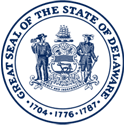DEPARTMENT OF HEALTH AND SOCIAL SERVICES
Division of Medicaid and Medical Assistance
FINAL
ORDER
Medicaid Reimbursement for Prescription Drugs
NATURE OF THE PROCEEDINGS:
Delaware Health and Social Services ("Department") / Division of Medicaid and Medical Assistance (DMMA) initiated proceedings to amend the Title XIX Medicaid State Plan regarding the drug pricing reimbursement methodology for pharmaceutical products, specifically, implementation of the pricing benchmark, National Average Drug Acquisition Cost (NADAC), as published by the Centers for Medicare and Medicaid Services (CMS). The Department's proceedings to amend its regulations were initiated pursuant to 29 Delaware Code Section 10114 and its authority as prescribed by 31 Delaware Code Section 512.
The Department published its notice of proposed regulation changes pursuant to 29 Delaware Code Section 10115 in the March 1, 2014 Delaware Register of Regulations, requiring written materials and suggestions from the public concerning the proposed regulations to be produced by March 31, 2014 at which time the Department would receive information, factual evidence and public comment to the said proposed changes to the regulations.
SUMMARY OF PROPOSAL
The Division of Medicaid and Medical Assistance (DMMA) hereby affords the public notice of its intention to amend the Title XIX Medicaid State Plan regarding the drug pricing reimbursement methodology for pharmaceutical products, specifically, implementation of the pricing benchmark, National Average Drug Acquisition Cost (NADAC), as published by the Centers for Medicare and Medicaid Services (CMS).
Statutory Authority
Background
Section 1927(f) of the Social Security Act provides, in part, that the Centers for Medicare and Medicaid Services (CMS) may contract with a vendor to conduct monthly surveys with respect to prices for covered outpatient drugs dispensed by retail community pharmacies. In addition, section 1927(i) also provides in part that CMS complete an annual report to Congress that includes ingredient costs paid for single source, multiple source, and non-prescription covered outpatient drugs.
Monthly surveys focus on the drug prices that retail community pharmacies pay to acquire drugs. Specifically, the vendor surveys these acquisition costs of covered outpatient drugs purchased by independent and chain retail community pharmacies.
State Medicaid agencies reimburse participating pharmacy providers for covered outpatient drugs that are prescribed and dispensed to Medicaid beneficiaries. The payment consists of two parts: 1) reimbursement for drug ingredient costs, and 2) reimbursement for the cost of dispensing. In general, federal regulations require that Medicaid programs reimburse for drug ingredient costs at no more than the agency's best estimate of the acquisition cost for a drug. As defined in federal regulations at §42 CFR 447.502, estimated acquisition cost (EAC) is the state's best estimate of the prices generally and currently paid by providers for a drug marketed or sold by manufacturers or labelers in the package size of the drug most frequently purchased by providers.
Many Medicaid agencies currently utilize published drug pricing benchmarks to determine the EAC for drug ingredient costs. The Average Wholesale Price (AWP) was a primary drug pricing benchmark utilized in pharmaceutical reimbursement by state Medicaid agencies. Through numerous investigations, the Office of Inspector General found that AWP-based reimbursement was "fundamentally flawed" and caused Medicaid to pay too much for certain drugs.
In late 2009, a working group within the National Association of State Medicaid Directors (NASMD) convened to discuss various alternatives to AWP. The working group authored a white paper in June 2010 entitled "Post AWP Pricing and Reimbursement" that evaluated and developed options for the replacement of AWP in Medicaid reimbursement methodologies. Among the recommendations presented in the white paper was the establishment of a single national pricing benchmark based on average drug acquisition costs. Such a benchmark would provide state Medicaid agencies with a better estimate of prices paid by pharmacies for drugs because it would be based upon actual drug purchases. This approach to drug ingredient price determination provides greater accuracy and transparency in how drug prices are established and is generally more resistant to manipulation. The NASMD requested that CMS coordinate, develop, and support this benchmark.
CMS contracted with Myers and Stauffer LC, a national certified public accounting firm, to conduct surveys of retail community pharmacy prices, including drug ingredient costs, and to develop the National Average Drug Acquisition Cost (NADAC) pricing benchmark.
Purpose of NADAC
The purpose of the NADAC is to create a new national price benchmark that is more reflective of the prices that pharmacies pay to acquire prescription and over-the-counter drugs. The statute provides that such prices represent a nationwide average of consumer purchase prices, net of discounts and rebates. The survey data will provide information which CMS expects to use to assure compliance with Federal requirements. A monthly nationwide survey of licensed retail community pharmacies, which will include independent pharmacies and chain pharmacies in the United States, will be performed to collect drug acquisition cost information. To ensure that NADACs are accurate, timely, and robust, the NADACs will be reviewed and updated on a weekly basis.
The NADAC is available for consideration by the States to assist with their individual pharmacy reimbursement policies. CMS has contracted with Myers and Stauffer LC, a national certified public accounting firm, to conduct the surveys of drug ingredient costs from pharmacy entities, such as independent pharmacies and chain pharmacies in the United States, and to develop and maintain the NADAC pricing benchmark.
States have the option to use the NADAC as a reference price when setting their reimbursement methodology. To do so, states must submit a State Plan Amendment (SPA) to CMS in accordance with state plan requirements if they decide to use NADAC as a basis for payment.
Summary of Proposal
Delaware Health and Social Services (DHSS)/Division of Medicaid and Medical Assistance (DMMA) is implementing a new drug pricing methodology to reimburse pharmacies that dispense pharmaceutical products to Medicaid recipients. Effective April 1, 2014, DHSS/DMMA will start reimbursing pharmacies using the average acquisition cost (ACC) of a given pharmaceutical product using National Average Drug Acquisition Cost (NADAC) files that gives state Medicaid agencies covered outpatient drug information regarding retail prices for prescription drugs. The NADAC, as published by CMS, is a more accurate reflection of the ingredient cost of the medications covered by the DMMA drug benefit program.
Instead of the Average Wholesale Price (AWP), DMMA will reimburse pharmacy providers based on the NADAC for the ingredient cost and a dispensing fee more in line with the true cost of dispensing. The change will also reflect a more accurate definition of "Usual & Customary" for these providers.
Professional Dispensing Fee
Currently, the dispensing fee is set at three dollars and sixty-five cents ($3.65). DMMA will also revise its dispensing fee from $3.65 to ten dollars ($10.00) for each prescription.
In a proposed rule published in the Federal Register on February 2, 2012 regarding covered outpatient drugs at http://www.gpo.gov/fdsys/pkg/FR-2012-02-02/pdf/2012-2014.pdf, CMS proposes to replace the term "dispensing fee" with "professional dispensing fee". In the proposed rule, CMS retains the current definition of "dispensing fee," but proposes to replace the term with "professional dispensing fee" to reinforce the agency's position that once the reimbursement for a drug is properly determined, the dispensing fee should reflect the pharmacist's professional services and costs. DMMA agrees and has replaced the term "dispensing fee" with "professional dispensing fee".
The provisions of this state plan amendment are subject to approval by CMS.
Fiscal Impact Statement
It is estimated that the fiscal impact will result in savings in state and federal expenditures as follows:
|
|
Federal Fiscal Year 2014
|
Federal Fiscal Year 2015
|
|
General (State) Funds
|
$604,000.00
|
$1,340,000.00
|
|
Federal Funds
|
$747,000.00
|
$1,660,000.00
|
SUMMARY OF COMMENTS RECEIVED WITH AGENCY RESPONSE
The Governor's Advisory Council for Exceptional Citizens (GACEC) and the State Council for Persons with Disabilities (SCPD) offered the following observations and recommendations summarized below. The Division of Medicaid and Medical Assistance (DMMA) has considered each comment and responds as follows.
GACEC and SCPD
As background, DMMA notes that federal law requires Medicaid agencies to reimburse pharmacies for outpatient drugs based on two (2) components: 1) drug ingredient/acquisition cost; and 2) dispensing cost. The first component has historically been based on an "Average Wholesale Price" (AWP) benchmark. However, the federal Office of Inspector General determined that the AWP was flawed and resulted in excess payments to pharmacies. CMS has now contracted with a CPA firm to develop a new "National Average Drug Acquisition Cost" (NADAC) pricing benchmark. Any state wishing to adopt the NADAC must submit a Medicaid State Plan amendment to CMS.
DMMA proposes to adopt a Plan amendment incorporating the NADAC measure of acquisition cost. At the same time, it is increasing its reimbursement for dispensing cost from $3.65 to $10.00 per prescription. DMMA projects the following savings to State General Funds based on the new reimbursement standards: $604,000 (October 1, 2014- September 30, 2015); $1,340,000 (October 1, 2015 - September 30, 2016). Since the payment for dispensing a prescription is almost tripling (increasing from $3.65 to $10.00), these cost savings could only occur if the NADAC benchmark is much lower than the AWP benchmark.
After review of the proposed regulation, the Councils wanted to note that pharmacies have balked at low drug reimbursement rates in the past. See attached 8 DE Reg. 961-962 (February 1, 2003). Cf. attached "How Medicaid Is Squeezing Specialty Pharmacy Profits" (February 18, 2014). However, Council is unable to adopt a position on the proposed regulation given lack of information on whether the rates fairly compensate pharmacies. The effective date of the Plan amendment is April 1, 2014. Therefore, DMMA envisions adopting the new methodology without time to even consider comments which can be submitted until March 31 and this could have a significant impact on pharmacies.
Agency Response: DMMA thanks the GACEC and SCPD for their comments on the proposed Medicaid Prescription Drug Reimbursement Regulation published in the Delaware Register on March 1, 2014. DMMA believes that using the CMS-supported National Average Drug Acquisition Cost (NADAC) as the best available source for accurate information regarding the ingredient cost assures that pharmacies will receive proper compensation for drugs provided to Delaware Medicaid beneficiaries and that access to pharmacy services will not be compromised. Similarly, the new dispensing fee of ten dollars ($10.00) updates the current fee of three dollars and sixty-five cents ($3.65) which has been in place for at least twenty-five (25) years, and reflects the actual costs to dispense individual drugs as confirmed in various recent state surveys. DMMA has been in contact with its participating pharmacy providers via facsimile transaction, electronic listservs, and through pharmacy association conference calls to share the new reimbursement methodology and to respond to all related questions. As a result, DMMA does believe access to pharmacy services will continue as usual.
There is no change to the regulation as a result of this comment.
FINDINGS OF FACT:
The Department finds that the proposed changes as set forth in the March 2014 Register of Regulations should be adopted.
THEREFORE, IT IS ORDERED, that the proposed regulation to amend the Delaware Title XIX Medicaid State Plan regarding the reimbursement methodology for pharmaceutical products, specifically, implementation of the pricing benchmark, National Average Drug Acquisition Cost (NADAC), is adopted and shall be final effective May 10, 2014.
Rita M. Landgraf, Secretary, DHSS
DMMA FINAL ORDER REGULATION #14-14
REVISIONS:
ATTACHMENT 4.19-B
Page 14
STATE PLAN UNDER TITLE XIX OF THE SOCIAL SECURITY ACT
STATE: Delaware
METHODS AND STANDARDS FOR ESTABLISHING PAYMENT RATES – OTHER TYPES OF CARE
REIMBURSEMENT FOR PHARMACEUTICALS
Overview
The Delaware Medical Assistance Program (DMAP) will reimburse pharmaceuticals using the lower of:
Entities that qualify for special purchasing under Section 602 of the Veterans Health Care Act of 1992, Public Health Service covered entities, selected disproportionate share hospitals and entities exempt from the Robinson-Patman Price Discrimination Act of 1936 must charge the DMAP no more than an estimated acquisition cost (EAC) their actual acquisition cost (AAC) plus a professional dispensing fee. The EAC AAC must be supported by invoice and payment documentation.
Professional Dispensing Fee:
The professional dispensing fee rate is $3.65 $10.00. There is one professional dispensing fee per 30-day period unless the class of drugs is routinely prescribed for a limited number of days.
Definitions:
Delaware Maximum Allowable Cost (DMAC) - a maximum price set for reimbursement:
Usual and Customary (U & C) - the lower of
Any willing provider can dispense the product.







